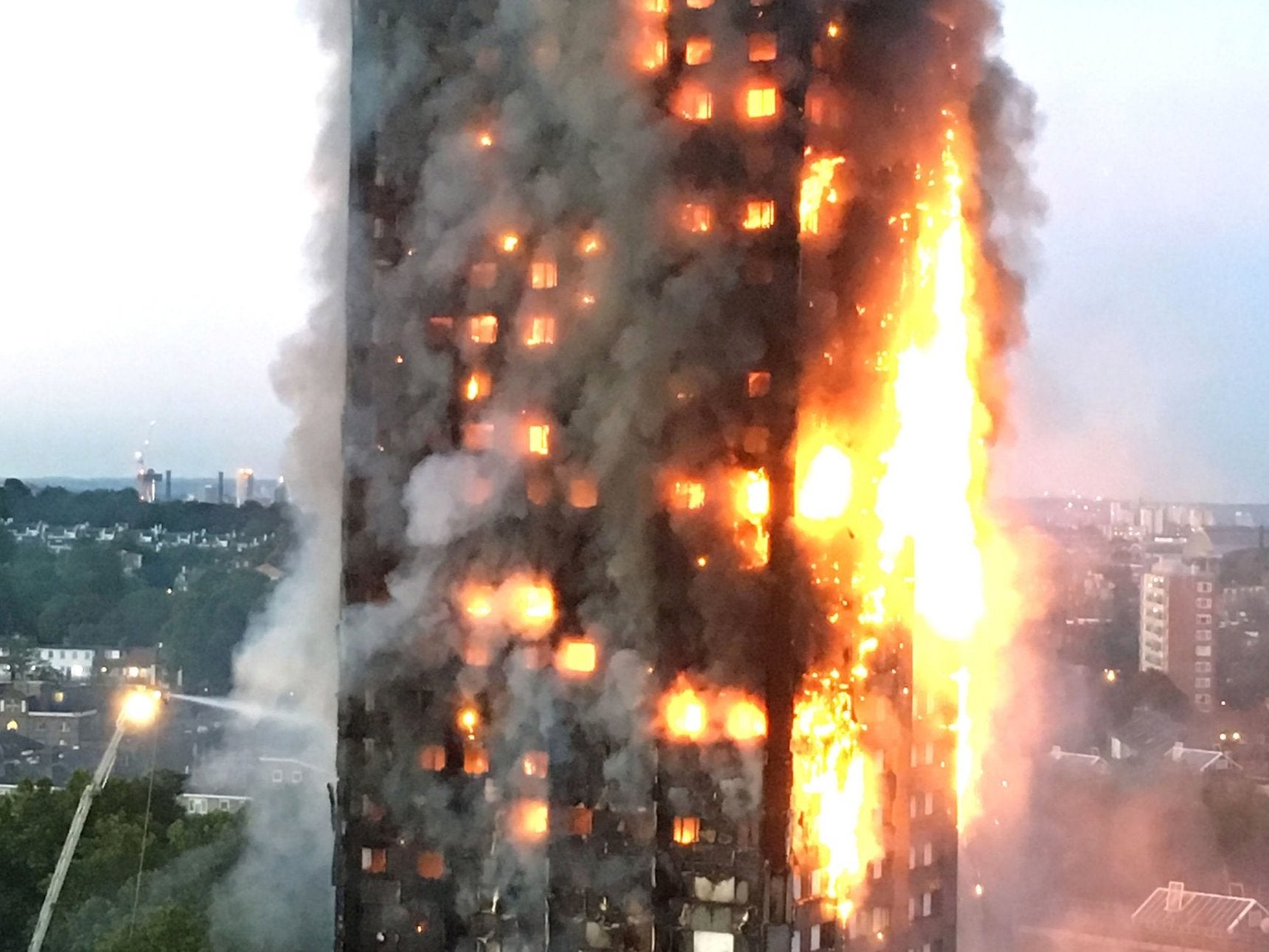Survivors of Grenfell Tower disaster forced to evacuate inquiry after fire alarm
False alarm delays evidence of firefighter, who tells of ‘frustrating’ attempt to rescue residents

The Grenfell Tower inquiry had to be evacuated after a fire alarm went off during the hearing.
Families affected by the tragedy were told by chairman Sir Martin Moore-Bick to follow ushers out of the building in Holborn Bars, central London.
An automated announcement was made on the speakers: “Attention please, attention please, a fire has been reported in the building, please leave the building immediately.”
Ten minutes later a fire warden confirmed that it was a false alarm, and everyone was allowed back inside at around 1pm.
After the break, a senior firefighter told the hearing he knew that residents should be evacuated from Grenfell as soon as he arrived at the scene, shortly before 2am on 14 June last year.
Daniel Egan, who was tasked with coordinating information from calls between 999 operators and trapped residents, said he found the lack of progress in getting people out “very frustrating”.
He wrote in his statement: “I was told people were jumping from the tower. I knew they weren’t going to be alive. I just had to ignore it and try to get into the tower to make sure that the information about the people trapped inside was getting through.
“I could hear that people were so scared and crying for help – I couldn’t look. I didn’t want to see anyone fall, although I knew it was going to happen. I was thinking, ‘Just get out.’”
Mr Egan said he knew the stay put advice to residents in the block was unsafe because the whole building was “alight”, but added: “People can be frightened to step outside policy.”
He told group manager Tom Goodall, the fire survival lead, and incident commander Richard Welch that he thought the strategy should be ditched, the inquiry heard.
Mr Egan was told: “We are doing it.”
The stay put advice was abandoned at 2.47am, nearly two hours after the fire began.
Mr Egan’s statement also described a heartbreaking phone conversation with a trapped mother whose children were dying.
“The woman had said that one of her children was dead and the other was dying,” he said. “She said she just wanted to die.
“The woman’s boyfriend was standing 10 yards behind me just staring up at the flat.”
The phone then went quiet.
Mr Egan continued: “By that point I knew that we weren’t going to put the fire out – we needed to put more effort into getting people out, not putting water on the flames.
“My view was we should commit crews to every floor – we needed to flood the building with firefighters. I passed my thoughts up the chain of command.
“It was very frustrating: we weren’t seeing the people coming down from the tower. I felt I was failing but I knew there was nothing else I could do.
“I knew I couldn’t do anything else but I wanted to do more.”
Mr Egan also revealed confusion over attempts to rescue residents, including the “priority” case of a disabled man trapped in flat 83 on the 11th floor.
“The safety officer was saying the man was on the eighth floor but I thought he was on the 11th floor,” said Mr Egan.
“I realised that he was only counting from above the floors covered in glass panelling, missing out the ground and first floors.”
He later learned the rescue crews were sent to the eighth floor.
Pictures of whiteboards that firefighters used to keep track of residents who needed rescuing were shown to the inquiry.
A “P” could be seen next to some flat numbers in red ink, indicating which rescues were a priority.
This included a cluster of residents on the top floor of Grenfell Tower, where most of the victims of the disaster were trapped.
Press Association
Join our commenting forum
Join thought-provoking conversations, follow other Independent readers and see their replies
Comments